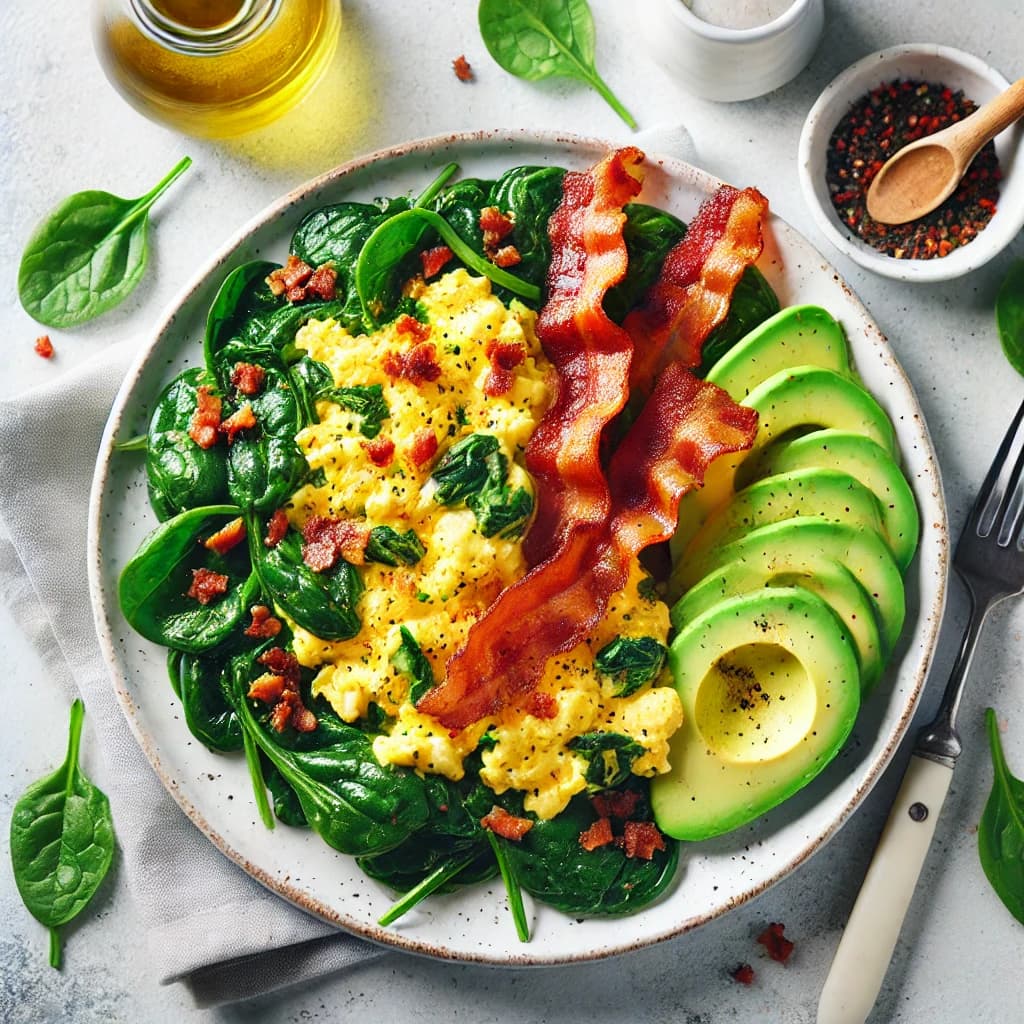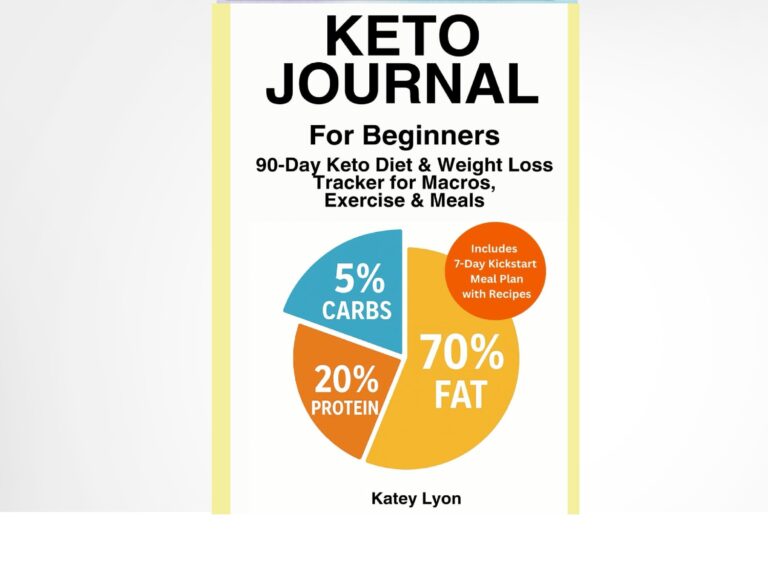What Is The Keto Diet Exactly?
A keto diet is well known for being a low-carb diet in which the body produces ketones in the liver to be used for energy. It is referred to by many different names—ketogenic diet, low-carb diet, low-carb high-fat (LCHF), etc. When you eat something high in carbohydrates, your body will produce glucose and insulin.
Glucose is the easiest molecule for your body to convert and use as energy, so it will be chosen over any other energy source. Insulin is produced to process glucose in the bloodstream, carrying it around the body. Since glucose is being used as a primary energy, your fats are not needed and are therefore stored. Typically on a regular higher carbohydrate diet, the body will use glucose as the primary form of energy.
By decreasing carbohydrate intake, the body is put into a state known as ketosis. Ketosis is a natural process that the body initiates to help us survive when food intake is low. During this state, we produce ketones, which are produced from the breakdown of fats in the liver.
The ultimate goal of a properly maintained keto diet is to force your body into this metabolic state. We do this not through a huge decrease in calories, but through a decrease in carbohydrates. Our bodies are extremely adaptable to what they take in – when you over-load it with fat and take away carbs, it will start burning ketones as its primary source of energy.


The Keto Diet explained by science
What to eat on keto diet?
To start a keto diet, you’ll want to plan. That means having a workable diet plan ready. What you eat depends on how quickly you want to get into the ketogenic state. The more restrictive you are with your carbs (less than 15g per day), the faster you’ll get into ketosis. Typically, something between 20-30g net carbs per diet day is recommended – but the lower you keep your glucose levels, the better your overall results. If you need meal ideas, there are plenty of keto recipes. You may be asking, “What is a net carb?” It’s really simple! Net carbs are your total dietary carbs, minus total fiber. Let’s say, for example, you want to eat some broccoli (1 cup) – my favorite and the most delicious vegetable there is.
There is a total of 6g of carbohydrates in 1 cup.
There is also 2g of fiber in 1 cup.
So, we take the 6g (total carbs) and subtract the 2g (dietary fiber).
This will give us our 4g net carbs.
Physical performance
You may see some limitations in your performance when you first start a keto diet, but as your body fully adapts to using fat as its primary energy source, all of your strength and endurance will return to normal. Many people ask if carbohydrates are necessary to build muscle. Of course not. If you’re asking this, I’m going to assume you know how you gain mass.
Your glycogen stores can still be replenished while on a ketogenic diet. A keto diet is a great way to build muscle, but protein intake is the key here. It is suggested that if you want to gain mass, you should consume around 1.0 – 1.2g of protein for every lean pound of body mass. Adding mass on a ketogenic diet may be slower, but your total body fat isn’t increasing. If, for some reason, you need to add body fat as well, you can achieve your personal goals through a Cyclic Keto Diet or a Targeted Keto Diet.
People often argue that a keto diet affects performance, but that’s not true. One study was done on trained cyclists on a ketogenic diet for four weeks. The results show that aerobic endurance was not compromised, and their muscle mass was the same as when they started. Their bodies adapted through ketosis, limiting glucose and glycogen stores and using fat as the predominant energy source. Another study was done on eight professional gymnasts with the same results.
Both groups were fed a strict diet of green vegetables, high-quality protein, and fat. So, even if you’re doing long bouts of cardio, the keto diet has been proven repeatedly. The only real time when ketosis can cause a loss in performance is in exercises that require explosive action. If you need a little performance boost during these, you can “carb-up” by eating 25-50g of carbs around 30 minutes before training.
What are the negative effects of the keto diet?
Your body is used to the simple routine of breaking down carbohydrates and using them for energy. Over the years, the body has developed an arsenal of enzymes to carry out this process, while it has only a few to process fats. In addition, most of them are dedicated to storing them. Suddenly, your body is faced with a lack of glucose and increased fats, so it has to produce many new enzymes.
As your body reaches a ketogenic state, it will begin to use the last traces of glucose. This means your muscles will run out of glycogen, leading to a lack of energy and a feeling of lethargy. In the first few weeks, many people report:
• Headaches
• Mental confusion
• Flu-like symptoms (known as the “keto flu”)
• Dizziness
• irritation
In most cases, this results from a drop in your electrolytes, as ketosis has a diuretic effect. Be sure to drink plenty of water and keep your sodium intake high. You should increase your salt intake. Put salt on EVERYTHING! This will help you retain fluids and replenish lost electrolytes.
For a normal person who starts a ketogenic diet—that is, who consumes only between 25 and 40 grams of carbohydrates daily—the adaptation process will take about two weeks. My advice is to cut your carb intake to less than 15 grams a day to ensure you get into ketosis in the first week.
Frequently asked questions
Q: How much weight will I lose?
A: The amount of weight you lose depends on the calories you consume. When you start the diet, you will lose water weight and start losing fat. Check the keto recipes and pay attention to the calories. I know some people claim that you do not have to count calories, but I strongly suggest you do. Besides, if you diet correctly, you will not be hungry.
Q: How should I track my carb intake?
A: Initially, I would track the carbs by following a meal plan with the nutrients on each recipe and the calories. To get your net carbs, subtract your total fiber intake from your total carb intake. Use a Journal like the Keto Journal For Beginners
Q: What happens after you reach your goal weight on keto?
A: I always suggest that if you do not want to continue with keto, start a low-carb diet like the Paleo diet, and after about a week, start slowly adding carbs if you want to do so. If you stop the keto and start eating high-carb food, you will not only gain more weight, you might double the weight you gain. So be careful. Otherwise, continue with the keto diet. You can also continue with the Keto Mediterranean diet, is another option if you want to add more foods.
Q: How can I save more money? Some ingredients are expensive in the keto diet.
A. Make more for dinner so you can have the same dish for the next lunch day. You can also buy in bulk to save more money. The other option is to look for recipes that have variations. For example, you can make ham and cheese biscuits with coconut flour or almond flour. So, choose cheaper coconut flour.
Example of a Keto Lunch
Herbed Chicken Skewers

Preparation Time: 10 minutes + marinating time
Cooking time: 25 minutes
Servings: 4
Ingredients:
- 1-pound, boneless, skinless chicken breasts sliced into a long thin strip
- 1 cup Italian Dressing
- 1 teaspoon Italian seasoning
- Freshly ground black pepper
Directions:
- Combine the chicken, Italian dressing, and Italian seasoning in a resealable plastic bag and marinate in the refrigerator for at least 1 hour.
- Soak your 12 bamboo skewers in water within 10 minutes—Preheat the grill to 350 F.
- Remove the marinated chicken and thread them in your skewer. Crack some fresh pepper over each of the skewers.
- Place the skewers on the grill within minutes, then flip and cook another 5 to 10 minutes or until cooked through.
MACROS: Fat: 59%; Carbs: 7%; Protein: 34%
Nutrition: Calories: 288; Fat: 20g; Protein: 26g; Carbs: 1g
What The Keto Diet Actually Does To Your Body | The Human Body













